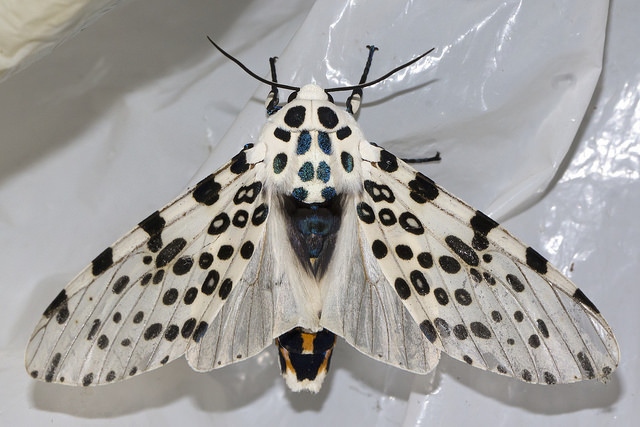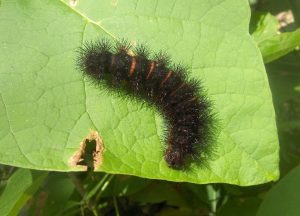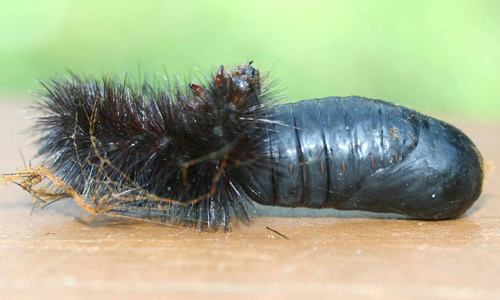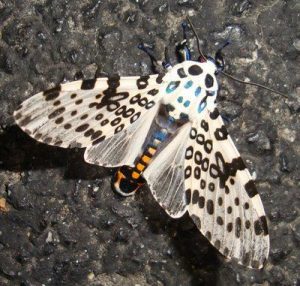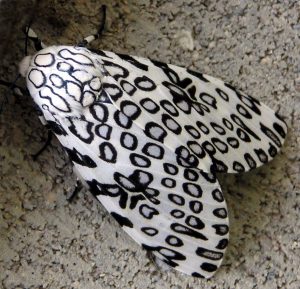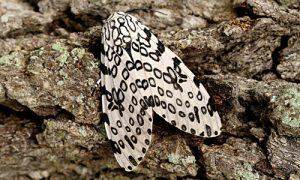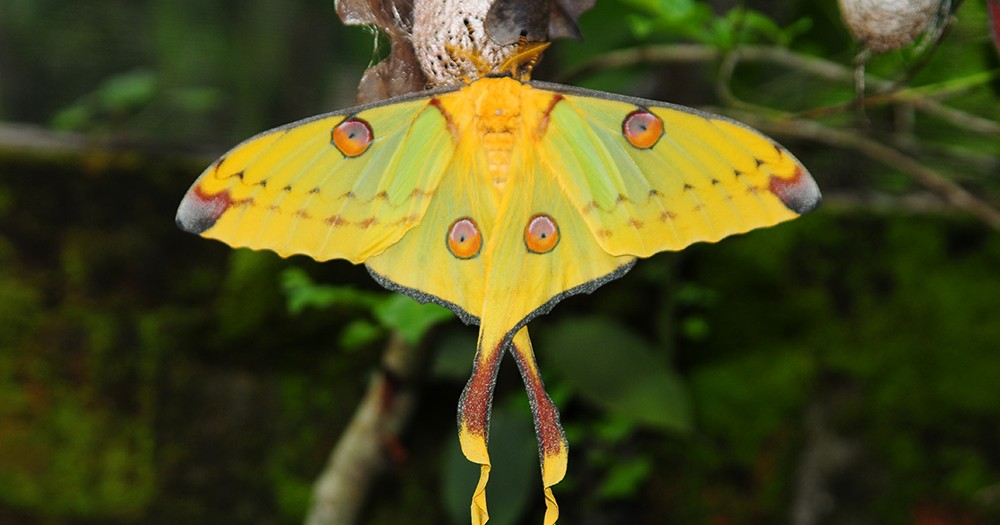Giant Leopard Moth (Hypercompe scribonia)
Giant leopard moth of the Erebidae family has an extensive range covering the whole of North America. It is found in the southern part of Ontario to the south and the eastern U.S., touching the borders of New England, Mexico, and finally Central America’s Panama. Its former name Ecpantheria scribonia obsolete at present is used occasionally.
objects.liquidweb.services
Scientific Classification
- Family: Erebidae
- Genus: Hypercompe
- Scientific Name: Hypercompe scribonia
Description and Identification
Caterpillar
The caterpillar looks like a woolly bear with its thick coat covered with black bristles. The abdominal segments are dark brown with orange or red shades in between. The orange bands get more prominent when the larva rolls to a ball to defend itself from predators.
Adult Moth
Sexual Dimorphism: Present
Color and Appearance: When opened, the wings are white with solid and hollow black blotches. When closed, the pattern is the same, with most of the dots being hollow, while those to the sides remain solid.
It has a dark blue abdomen with orange markings on the overside and white with black spots on the undersides.
The difference between males and female are prominently visible as the former reach a length of 5.1 cm, while the latter is 3 cm long. The males even have yellow lines to the sides of their abdomen.
Wingspan: 7.6 cm
Flight Pattern: Consistent
Season: April – September
Eggs
The eggs are pearl gray and spherical, with a diameter of about 0.8 mm.
Quick Facts
| Other Names | Great leopard moth, eyed tiger moth |
| Distribution | Massachusetts, southern Ontario, Florida, Michigan, Texas, New England, Missouri |
| Habitat | Woodlands, scrublands, parks, and gardens |
| Predators | |
| Lifespan of adults | Not recorded |
| Host plants | Bougainvillea, Brassica, Brugmansia, Cannabis, Citrus, Dioscorea, Euphorbia, Helianthus, Lagerstroemia, Lettuce, Lonicera, Morus, Magnolia, Musa, Persea, Viola, Salix, Syringa, Ricinus, Robinia |
| Adult diets | Nectar |
Scientific Classification
- Family: Erebidae
- Genus: Hypercompe
- Scientific Name: Hypercompe scribonia

